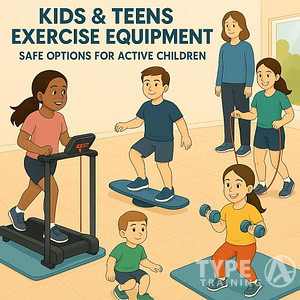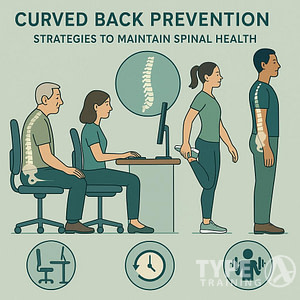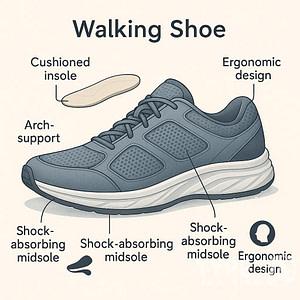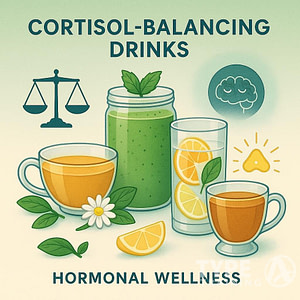Injury prevention is crucial for women, especially for those involved in sports and fitness activities. Female athletes face unique injury risks and require specific prevention strategies. Understanding these risk factors and implementing effective injury prevention techniques can significantly reduce the incidence of injuries in women.
One key aspect to consider for injury prevention is balance training and the importance of joint health. Women’s joints tend to have more looseness and range of motion than men’s, which can lead to increased injury risk. Core strengthening is another important factor, as a strong core helps stabilize the entire body and keeps hips, knees, and ankles injury-free. In addition, nutrition plays a vital role in injury prevention as it supports muscle recovery and bone health.
Key Takeaways
- Incorporate balance training and core strengthening for joint stabilization and injury prevention.
- Understand unique injury risk factors faced by female athletes.
- Emphasize nutrition for muscle recovery and bone health in injury prevention efforts.
Injury Prevention for Active Women
As a woman, you may be more susceptible to certain sports-related injuries due to factors such as joint laxity and muscle imbalances. However, incorporating specific injury prevention strategies into your routine can help reduce your risk of injuries while maintaining peak athletic performance.
One important aspect of injury prevention is balance training. Focusing on exercises that promote stability in your joints, especially the knees, can aid in reducing the chances of ligament injuries such as ACL tears, which are common among female athletes. Examples of balance exercises include single-leg stands, lunges, and squats performed on unstable surfaces.
Popular posts:
Core strengthening is also crucial for injury prevention. A strong core not only supports your spine and improves posture but also allows for more efficient body movement during sports activities. Incorporating core exercises such as planks, bridges, and side planks can help reduce the risk of lower back and abdominal injuries.
It’s essential to tailor your training to the specific demands of your sport and pay attention to muscle imbalances that often afflict female athletes. Targeting underused muscles while stretching overused ones will help maintain overall muscle balance and reduce the risk of injury. Plyometric exercises, such as squat jumps and depth jumps, can help to minimize muscle imbalances and improve overall athletic performance.
Paying attention to proper technique during sports activities is crucial for injury prevention. Proper landing and decelerating patterns, as well as good muscle recruitment practices, can significantly reduce the risk of injury in women. Consult with a coach or sports specialist to ensure your techniques are correct and safe.
Nutrition also plays a vital role in injury prevention. Consuming a balanced diet that includes adequate protein, vitamins, and minerals helps to keep your muscles, ligaments, and joints healthy. In particular, calcium and vitamin D are essential for maintaining strong bones, and omega-3 fatty acids can help reduce inflammation and promote joint health.
In conclusion, incorporating balance training, core strengthening, sport-specific exercises, proper technique, and nutrition into your fitness routine can significantly impact injury prevention and improve your overall athletic performance as a female athlete.
Injury Risk Factors and Female Athletes
As a female athlete, you should be aware of the various injury risk factors that can impact your performance and overall health. One common injury in female athletes is to the anterior cruciate ligament (ACL) in the knee. ACL injuries often occur during sports that involve sudden changes in direction, such as soccer. Your risk of an ACL injury may be higher than that of males due to differences in muscle strength, joint laxity, and biomechanics.
Apart from ACL injuries, female athletes are at risk of developing other types of knee injuries, as well as ankle sprains and shoulder issues. To reduce your risk of injury, consider incorporating specific training techniques into your exercise routine.
- Balance training and joint stability: Improving balance and joint stability can help prevent ankle injuries and enhance knee stability. Studies show that balance training programs can significantly reduce the risk of ankle sprains in athletes.
- Core strengthening: A robust and stable core can improve athletic performance and reduce the risk of injury. Working on core stability exercises can help improve muscle strength and recruitment patterns, which play a crucial role in preventing ACL injuries.
- Proper landing and decelerating patterns: Learning the correct techniques for landing and decelerating can help prevent non-contact ACL injuries. Customized training programs can teach you the right form and biomechanics to avoid putting excessive stress on your joints.
- Regular rehabilitation: Engaging in appropriate rehabilitation exercises after any injury is critical to ensure proper healing and prevent any further damage. Consulting a sports medicine specialist can help you understand and implement the rehabilitation process effectively.
Finally, don’t forget the importance of a balanced, nutrient-rich diet to support your body and maintain optimal health. Prioritizing hydration, consuming adequate protein, and getting enough vitamins and minerals can promote healthy muscles and joints, making you less susceptible to injury during physical activities.
Balance Training and Joint Health
Balance training is an essential component of injury prevention for women, especially for female athletes who are vulnerable to ankle sprains, knee injuries, and joint laxity. Incorporating targeted exercises into your routine can significantly reduce injury risk factors associated with poor balance, joint stability, and muscle strength.
One effective strategy for bolstering joint health is to focus on exercises that improve proprioception and neuromuscular control. These can include single-leg balance exercises, unstable surface training, and functional movement patterns. For instance, incorporating exercises such as single-leg squats, balance beam walking, and wobble board exercises into your routine can help stabilize the ankle and knee joints and reduce the risk of ligament injuries.
In addition to balance exercises, it is crucial to emphasize core strengthening workouts in your injury prevention plan. A strong core provides a stable base for your body’s movements, thus minimizing unnecessary stress on your joints. Engage in exercises like planks, dead bugs, and bird-dogs to strengthen your core muscles and improve overall body alignment.
Nutrition also plays a crucial role in injury prevention and joint health. Consuming a diet rich in essential nutrients, such as calcium and vitamin D, supports bone health and joint integrity, while omega-3 fatty acids found in fish oil and flaxseeds can help reduce inflammation. Additionally, adequate hydration is crucial for proper joint lubrication and muscle function, so be sure to drink water regularly throughout the day.
In conclusion, an effective injury prevention program consists of a combination of balance training, joint-specific exercises, core strengthening, and proper nutrition. By incorporating these strategies into your routine, you are taking proactive steps to protect your joints, enhance your balance, and reduce your risk of injury.
Core Strengthening for Injury Prevention
A strong core is essential for injury prevention, especially for female athletes. By focusing on core strengthening, you can improve muscle activation, neuromuscular control, static stabilization, and dynamic stability, which all contribute to reducing the risk of injury (Core Stability Training).
Incorporating specific exercises into your daily routine helps strengthen not only your abdominal muscles but also your lower back and pelvic muscles. Here are some effective exercises to consider:
- Planks: Hold a plank position for 30-60 seconds, squeezing your glutes and abs, making sure your back is straight and not dipping.
- Bird dogs: On all fours, extend one arm and the opposite leg simultaneously, while maintaining balance and a neutral spine.
- Bridges: Lie on your back, with your knees bent and feet flat on the ground. Lift your hips up, engage your glutes and core, and hold for a count of 5.
In addition to these exercises, integrate strength training and balance exercises to enhance core stability. For instance, you could incorporate yoga or Pilates to improve balance, flexibility, and overall core strength.
Weak lower abs and lower back muscles may lead to increased injury risk. Strengthening these muscles not only provides better support to your spine but also helps prevent injuries related to poor posture. Moreover, a strong core plays a crucial role in stabilizing the entire body and keeping joints protected, like hips, knees, and ankles.
Alongside a balanced exercise routine, proper nutrition is essential for injury prevention. A healthy diet, rich in vitamins, minerals, and anti-inflammatory foods, ensures adequate muscle recovery and tissue repair. Consuming lean protein sources and anti-inflammatory foods like leafy greens and berries can support core muscle recovery and optimize overall health.
By incorporating core strengthening exercises, strength training, balance training, and a well-balanced diet, you’ll be well on your way to reducing injury risk and maintaining a healthy, active lifestyle.
Nutrition and Injury Prevention
Eating a balanced diet is crucial for injury prevention, as it provides your body with the necessary nutrients to support muscle and joint health. Proper nutrition can help female athletes and active women reduce injury risk and enhance overall performance.
As an active woman or female athlete, make sure to include a variety of nutrient-dense foods in your diet to maintain a healthy balance. Protein is essential for muscle growth and repair, and it’s recommended to consume 1.2-1.7 grams per kilogram of body weight daily1. Consider consuming lean meats, fish, dairy products, and plant-based protein sources such as beans and lentils.
Calcium and vitamin D play an essential role in maintaining strong bones and reducing injury risks, especially among female athletes, who can be more prone to stress fractures. Ensure adequate calcium intake by including dairy products, leafy greens, calcium-fortified foods, and vitamin D through exposure to sunlight, fatty fish, and fortified foods in your diet.
Iron is another vital nutrient for active women, as it helps transport oxygen to your working muscles. Low iron levels can lead to reduced muscle performance and increased injury risk. Consume iron-rich foods such as red meat, fortified cereals, beans, and dark leafy greens to maintain sufficient iron levels.
Incorporating anti-inflammatory foods in your diet can aid in injury prevention and recovery. Foods rich in omega-3 fatty acids like salmon, walnuts, and chia seeds can help to manage inflammation and support healthy joints. Additionally, vegetables and fruits rich in antioxidants, such as berries and leafy greens, can alleviate post-exercise oxidative stress and muscle damage.
Stay well-hydrated throughout the day and during physical activities to maintain joint lubrication and proper muscle function. Dehydration can increase the risk of injury and reduce exercise performance.
In conclusion, paying attention to your nutritional needs as a female athlete or active woman can significantly impact your injury prevention efforts and overall physical performance. Ensure adequate intake of essential nutrients, anti-inflammatory foods, and proper hydration to support your physical activity and minimize injury risks.
Biomechanics and Injury Risk
Understanding biomechanics plays a crucial role in injury prevention for female athletes. As an athlete, you should be aware of the factors that contribute to the risk of injuries, specifically within the context of biomechanics. Proper form, muscle balance, joint stability, and training adjustments can all help mitigate your risk of injury.
One of the primary biomechanical factors that contribute to injuries in female athletes is knee valgus, which is an inward angling of the knees during activities like jumping and landing. This puts excessive strain on the knee joint, leading to a higher risk of injury. To counteract knee valgus, incorporate balance training into your routine to enhance joint stability and improve overall strength.
Another factor to consider is internal rotation and hip adduction, which involve an athlete’s hip muscles rotating inwards and moving towards the center of the body. These motions contribute to a higher injury risk due to increased stress on the joints. To address this, focus on core strengthening exercises that specifically target lower body muscles such as squats, lunges, and deadlifts. Developing strong muscles in the lower back, hips, and thighs will improve your posture and stability.
Nutrition is also an essential aspect of injury prevention. A well-balanced, nutrient-dense diet supports healing and reduces inflammation, allowing you to recover faster from any injuries. Consume a mix of lean proteins, complex carbohydrates, healthy fats, and an array of vitamins and minerals to provide your body with the tools it needs for optimal performance and injury prevention.
In summary, by paying attention to biomechanics and understanding how factors like knee valgus, internal rotation, and hip adduction can contribute to injury risk, you can make the necessary adjustments in your training and lifestyle. Incorporating balance training, core strengthening, and proper nutrition will not only reduce your risk of injuries but also enhance overall health and performance as a female athlete.
Neuromuscular Training and Injury Prevention
Incorporating neuromuscular training into your routine can be an effective way to prevent injuries, especially for female athletes. This training approach helps improve your balance, proprioception, and muscle coordination, which in turn decreases the risk of common injuries such as strains, sprains, and ligament tears.
The essence of neuromuscular training lies in enhancing your body’s awareness of its position and movements. This helps you to maintain proper form during physical activities, reducing the stress placed on your joints, ligaments, and muscles. By focusing on balance and proprioception training, you’ll develop a better understanding of how to optimize your movement patterns, allowing you to achieve optimal performance without compromising your safety.
Incorporating balance training into your routine can further support injury prevention. Exercises that involve standing on one leg, using a balance board, or participating in yoga can improve your stability and reduce the risk of falls. An increased sense of balance can also enhance your ability to make rapid changes in direction, which is particularly important for female athletes in sports such as basketball, soccer, or tennis.
Core strengthening plays a crucial role in neuromuscular training as well. A strong, stable core provides a foundation for all your movements, helps to maintain correct posture, and ensures the appropriate distribution of force throughout your body. Exercises such as planks, bridges, and dead bugs target your core muscles and can be easily integrated into your training program.
Lastly, nutrition is another significant factor in injury prevention. Consuming a diet rich in nutrients that support joint and muscle health can boost your body’s ability to recover and reduce the risk of injury. Foods containing omega-3 fatty acids, vitamin D, calcium, and magnesium can promote strong bones and aid in muscle and ligament repair.
By incorporating neuromuscular training principles into your routine, focusing on balance and core strengthening, and adopting a nutrition plan aimed at injury prevention, you can play an active role in reducing your injury risk and achieving your athletic goals.
Sport-Specific Strategies
Injury prevention is essential for women participating in various sports. To minimize the risk of injuries in female athletes, it’s crucial to adopt sport-specific strategies depending on the activity.
In soccer, focusing on balance training, core strengthening, and proper technique can help minimize ankle sprains and knee injuries. Incorporating plyometrics, agility exercises, and flexibility training into your routine will improve your overall soccer performance and reduce injury risks.
For basketball players, paying attention to strength training, especially for the lower body, can help prevent common injuries like ACL tears. Additionally, practicing proper jumping and landing techniques will decrease the risk of ankle injuries. Ensure you wear well-fitted, supportive
When it comes to running, proper footwear and gait analysis are crucial in preventing injuries like stress fractures, shin splints, and plantar fasciitis. Gradually increase your mileage and intensity to avoid overloading your muscles and joints. Implementing strength training, balance exercises, and flexibility routines will benefit your overall running performance while minimizing the risk of injuries.
In female football, implementing functional and dynamic warm-ups, as well as strength and balance training can reduce the likelihood of muscle strains and ligament injuries. It is also vital to use appropriate protective gear, such as helmets and mouthguards, to avoid concussions and dental injuries.
Regardless of the sport, maintaining proper hydration and nutrition plays a significant role in injury prevention. Consuming sufficient nutrients like calcium and vitamin D supports bone health, while staying hydrated reduces the risk of muscle cramps and helps with overall performance.
Remember, sport-specific strategies are vital for injury prevention in female athletes. By focusing on suitable training methods, proper technique, and appropriate gear, you can ensure a safer and healthier athletic experience.
Education and Coaching
Educating yourself and seeking guidance from coaches or personal trainers can be incredibly beneficial for injury prevention. As a woman or female athlete, understanding the unique injury risk factors you face can help you develop effective strategies to stay injury-free.
One of the crucial factors to consider is your core strength, as it plays a key role in stabilizing your body and keeping your hips, knees, and ankles injury-free 1. Engaging in targeted core strengthening exercises will not only improve your performance but also significantly reduce the risk of injuries. Furthermore, incorporating balance training exercises into your workout routines can help enhance joint stability, particularly in the knee and ankle regions.
Nutrition also plays an essential role in injury prevention. A well-balanced diet, rich in essential nutrients, can help optimize your physical and psychological well-being. Ensuring adequate calcium and vitamin D intake, for example, is crucial for maintaining strong bones and preventing stress fractures 2. Consult with a registered dietitian or sports nutritionist to devise a personalized meal plan that caters to your unique needs.
Coaching or personal training can help you adhere to proper techniques and safer training methods. Professional guidance ensures that you execute exercises with the correct form, minimizing the likelihood of injury. Make sure to select a coach or trainer who is knowledgeable about injury prevention strategies, specifically for women or female athletes.
Implementing psychological strategies can further strengthen your adherence to injury prevention practices. Mental skills training, aimed at fostering goal-setting, self-awareness, and stress management, can be a valuable addition to your fitness routine.
In summary, a combination of education, coaching, personal training, and psychological techniques will enhance your injury prevention efforts. By prioritizing your physical and mental well-being, you can minimize injury risks and maintain a healthy, active lifestyle.
Efficacy of Intervention Programs
source: sportsmedicineweekly.com
Injury prevention is crucial for female athletes, particularly in terms of reducing injury risk factors, incorporating balance training for joints, core strengthening, and proper nutrition. Research shows that intervention programs can have a positive impact on injury prevention in women.
A systematic review and meta-analysis on making football safer for women found that injury prevention programs could effectively reduce injury incidence. These programs often include various modes of exercise and training, such as plyometrics, neuromuscular training, and strength training. For example, studies have shown promise in utilizing neuromuscular training and strength training at a young age to reduce ACL injuries.
To maximize the efficacy of intervention programs, it’s essential to identify and categorize strategies used in injury prevention research. The Haddon Matrix is one commonly used tool for categorizing these strategies. Identifying potential knowledge gaps within intervention research can help refine injury prevention for female athletes.
Preseason is a crucial time to implement injury prevention programs. By incorporating the appropriate training and exercises during this period, you can better prepare your body for the demands of your sport. Additionally, maintaining an adequate nutritional intake is vital for supporting your body through training and preventing injury. Some research suggests that specific nutrients, such as vitamin D and calcium, play a role in injury prevention.
In conclusion, staying informed about the most effective injury prevention methods and following a comprehensive intervention program can greatly benefit your athletic performance and overall health.
Conclusion
Incorporating injury prevention strategies into your fitness routine as a female athlete is essential for optimal performance and minimizing the risk of injuries. Focusing on balance training and joint mobility will help you maintain proper form and develop the necessary strength for various sports activities.
Additionally, core strengthening exercises can greatly improve your stability, posture and reduce the likelihood of sustaining injuries during intensive training or competitions. A well-rounded nutritional plan is equally important for injury prevention, as it provides your body with the necessary fuel and essential nutrients for recovery, muscle growth, and overall health.
Remember to consult with professionals, such as coaches, trainers, or even nutritionists, in order to tailor the prevention strategies to your specific sport, body type, and individual needs. By remaining consistent and dedicated to implementing these tactics, you’ll see improvements across multiple aspects of your athletic performance, helping you achieve your goals in a safe and healthy manner.
Frequently Asked Questions
What are the top injury prevention strategies for female athletes?
To prevent injuries, female athletes should focus on proper technique, flexibility, and strength training. Ensure that you have quality equipment and footwear specific to your sport. Gradually increase your training intensity and take rest days to avoid overtraining. Additionally, incorporating injury prevention programs can be beneficial in mitigating the risk of injuries such as ACL tears.
How does balance training contribute to reducing injury risk?
Balance training helps improve your stability and coordination, reducing the risk of falls and other accidents. It strengthens the muscles, ligaments, and tendons around your joints, making them more resilient to stress and force. Incorporating balance exercises into your workout routine can help prevent injuries and enhance your overall athletic performance.
Why is core strengthening important for injury prevention?
A strong core supports proper posture and alignment, reducing strain on your spine, hips, and knees. It also helps generate power and stabilize movement during physical activities. Core strengthening exercises can help prevent injuries by improving your stability and control, reducing the likelihood of overloading or stressing other body parts.
What role does nutrition play in preventing injuries for women?
Proper nutrition provides the necessary fuel and nutrients for muscle repair, growth, and overall health. Consuming a balanced diet with an adequate amount of protein, carbohydrates, healthy fats, vitamins, and minerals helps maintain and repair tissues and reduce inflammation. Prioritizing nutrition will not only support optimal athletic performance but also reduce the risk of injuries.
How can women minimize the risk of ACL tears?
To minimize the risk of ACL tears, focus on strength training, particularly for your hamstrings and quadriceps muscles. Improve your neuromuscular control and balance through plyometric and agility exercises. Proper biomechanics and landing techniques are also crucial in reducing ACL injury risk for female athletes.
What are some targeted injury prevention exercises for women?
Incorporate exercises that target muscle imbalances and promote functional movement patterns. Examples include single-leg squats, lateral jumps, and glute bridges. Balance exercises such as single-leg stands and stability ball exercises can improve stability and reduce the risk of falls. Including preventative exercises in your routine will help build strength, flexibility, and resilience to injuries.








